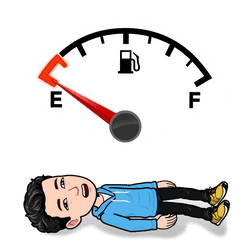Compare Declarative Frameworks
Choose up-to 3 frameworks and learn how they compare to each other.





Creating a new Component
Components are the reusable building blocks of your application. They are the most basic UI elements and can be used to build more complex components.
Pick a framework from the list above

Conditional Rendering
Conditional rendering is a technique used to display different UI components or content based on certain conditions, such as the value of a variable or the outcome of a boolean expression.
Prop/Parameter Drilling
Prop/Parameter drilling is a technique where data is passed through multiple layers of components in the component hierarchy, often from a parent component to a deeply nested child component, via props or parameters.
Responding to events
Responding to events involves handling user interactions, such as button clicks or text input changes, and updating the component's state or triggering side effects accordingly.
Handing user input
Handling user input involves capturing and processing user interactions with input fields, such as text fields, sliders, or checkboxes, and updating the component's state or triggering side effects based on the input.
Previewing a Component
Creating a preview of a component involves displaying a visual representation of the component in the development environment to help with the design and layout process.
Lists & Looping
Lists and looping involve rendering a dynamic number of components based on the length of a list or array, iterating over the list, and generating a UI component for each item.
List item keys
List Item Keys are unique identifiers assigned to each list item in declarative UI frameworks to help manage and update list elements efficiently. Using List Item Keys enables the framework to optimize the rendering process, minimizing unnecessary updates and improving overall performance.
Slot APIs
Slot APIs refer to a technique where components have customizable parts or 'slots' that can be filled with content when the component is being used. This allows for greater reusability and flexibility in composing user interfaces. The content that fills these slots can be other components or simple UI elements like text or images.
Modifiers
Modifiers are used to adjust or configure the UI elements' appearance or behavior in a declarative UI framework.
State
State management refers to the process of handling and updating the internal state of components, often in response to user interactions or other events.
Scoped Data Propagation
Scoped Data Propagation is a technique that involves passing data across multiple levels of a component subtree without having to explicitly pass it through every intermediate component. It helps reduce the complexity of prop drilling and allows for a more efficient way of sharing data in a specific scope.
Side Effects
A side effect involves executing code that can have external consequences or perform operations that are not directly related to rendering the UI, such as making network requests or updating external data sources.
© 2025 All Rights Reserved | Made by Vinay Gaba

